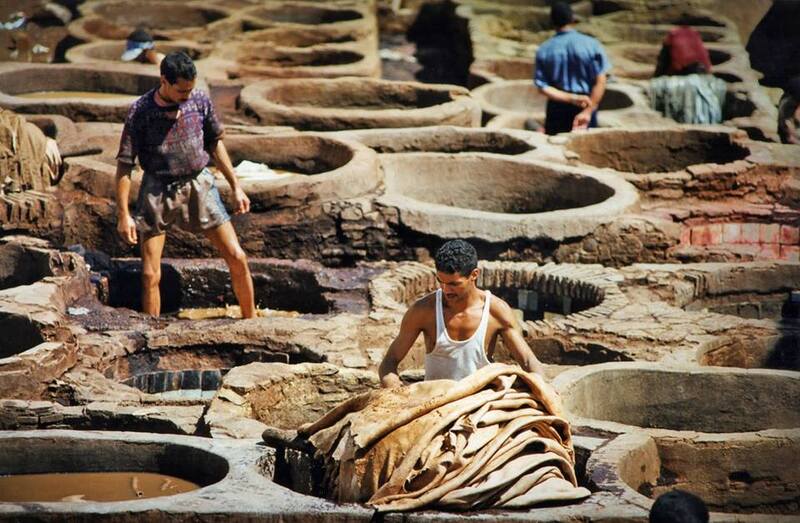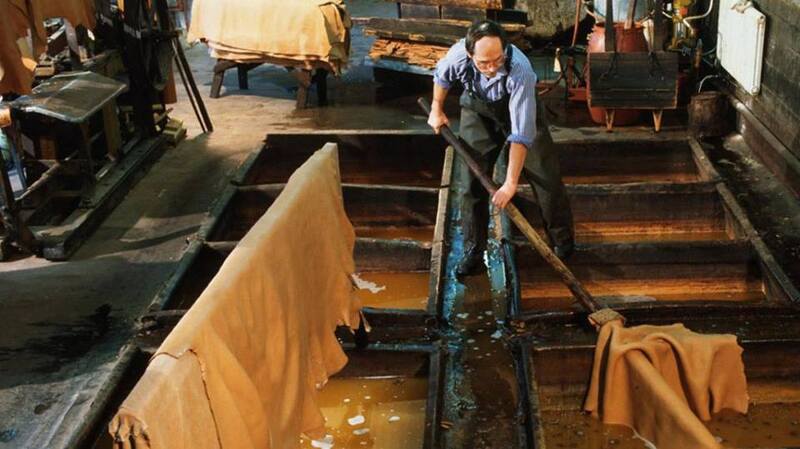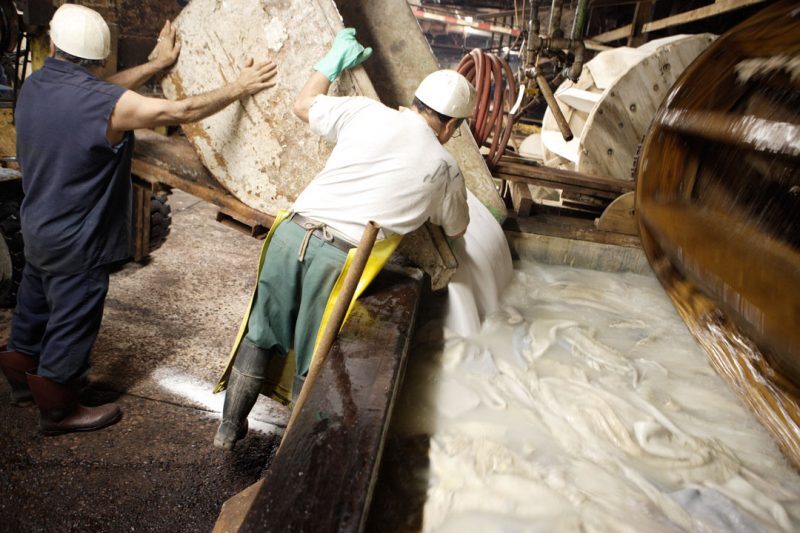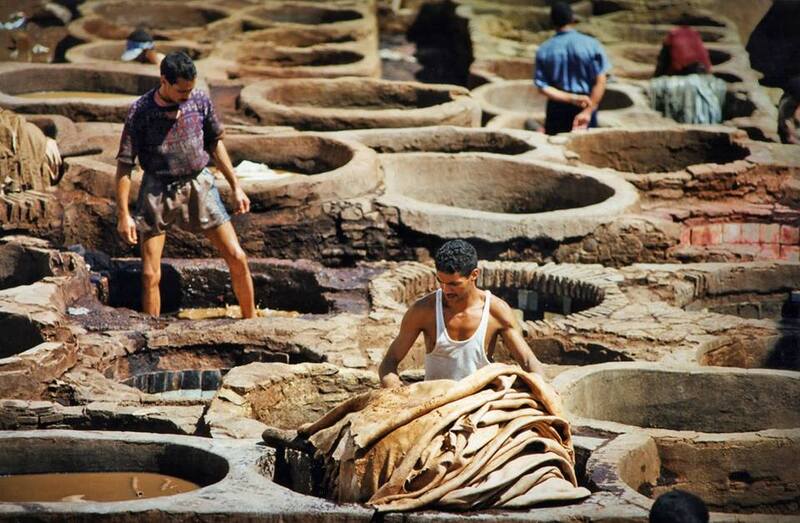The comparation between the early tanning and the present tanning
Whether it is in the past or now, tanning is always a very complex process requiring high expertise as well as time and effort of the human. Tanning is the process of treating raw animal skin with chemical substances into the leather to help the skin to be durable, supple and prevent skin decomposition in the long run. The final leather is then considered as an expecsive and luxurious material for making shoes, handbags, purses, belts, fashionable clothes, furniture covers. During 5000 years of development, tanning technique has certain changes, but in general, current tanning technique are much improved.
Skin preliminary processing
Before tanning, raw skin should be cleaned of fur, blood and remaining fibers on the surface. In ancient times, people used lime or urine solution to soak and wash the skin. Today, pre-processing techniques become much more complex. This process consists of the following steps: shaving and grinding hair, soaking lime, and then using other additives to balance the pH. Next, dipping the skin in dedicated enzymes for softening. Finally, sousing skin or using acid solution to reduce the pH of the skin.
Skin treatment techniques
There are three traditional techniques for treating skin: oil tanning, vegetable tanning and mineral tanning. Oil tanning is the oldest method. From the Stone Age, people have anointed oil on the skin and then smoked to keep the skin last longer. However, each region used different materials to treat the skin. Central Asian people use a mixture of milk and butter. Chinese people use egg yolks. Americans use a mixture of animal's brain and oil.
With a history of nearly 4,000 years, the vegetable tanning method, people dip the skin in a solution prepared from plants to provide firmness to the skin. Ancient Egyptians preferred flowers, while the Mediterranean used ferns for tanning. However, the most common is the solution from bark and oak bean.
Tanning with alum is actually mineral tanning. The leather soaked in alkaline solution has a high durability and white color. White leather was a very expensive product in medieval times in Europe. Today, this is the method of skin treatment before entering the dye stage of the skin.
In the 19th century, a new tanning method, called chrome tanning, was invented. With this method, the skin is treated to have an acidic pH. Next, people drench the skin with chromium metal so that the chrome particles penetrate the bundles of fibers in the skin. This method saves time rather than traditional methods and gives skin better stretchability but less elasticity.
In general, the modernity does not result in simplicity, today's tanning techniques are even more complex and cover much more stages than the ancient tanning techniques. However, in terms of time, it has saved a lot because of the use of industrial chemicals making the skin changes faster and safer. The quality of final leather is also enhanced under the support of modern machinery systems. In the past or at the present, tanning techniques are always a creative step to help the fashion world become more diverse and richer.
Currently in Vietnam, most shoe factories import leather from overseas. Hopefully, in the near future, Vietnamese businesses in the footwear industry will participate in all stages of the footwear production process.











